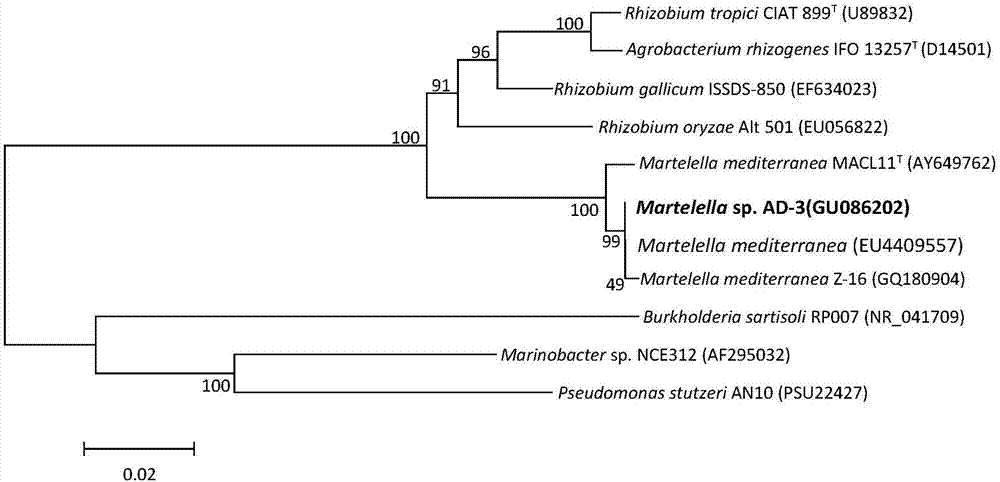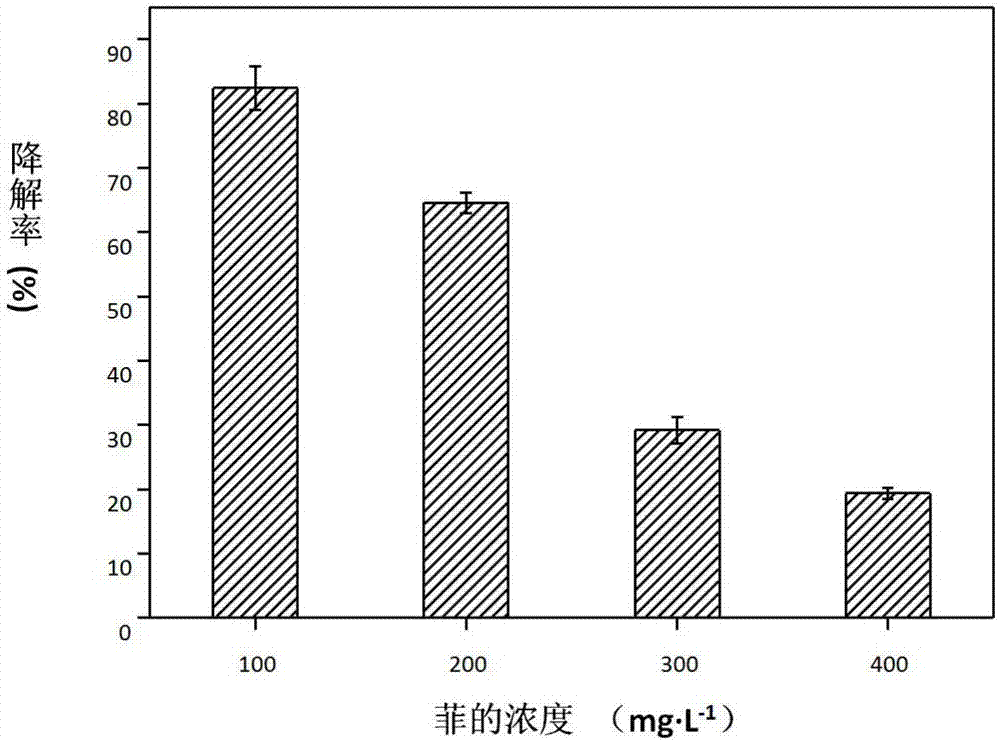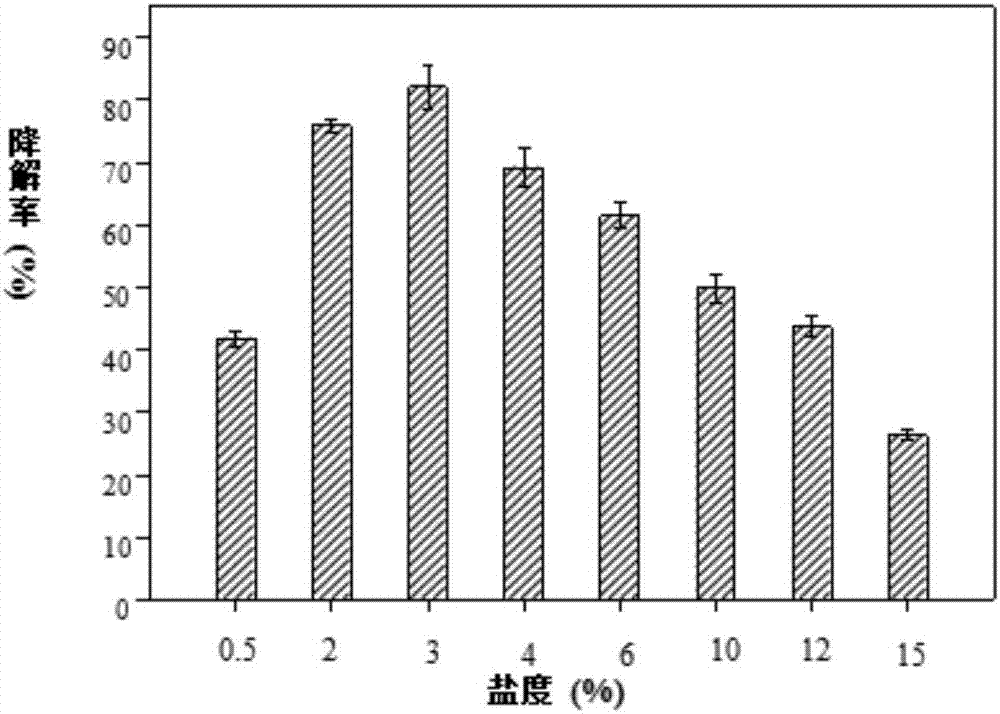Moderate halophilic aromatic pollutant degrading bacteria and application thereof
A technology for degrading bacteria and aromatics, applied in the restoration of polluted soil, bacteria, microorganisms, etc., can solve the problems of poor removal effect of PAHs, achieve potential application value, reduce ecological toxicity, and high degradation rate
- Summary
- Abstract
- Description
- Claims
- Application Information
AI Technical Summary
Problems solved by technology
Method used
Image
Examples
Embodiment 1
[0036] A moderately halophilic polycyclic aromatic hydrocarbon degrading bacterium, which was preserved in the China Type Culture Collection Center CCTCC on June 30, 2011, with the number CCTCC NO: M2011218, and the name is moderately halophilic polycyclic aromatic hydrocarbon degradation bacteria, Martelella sp. AD-3.
[0037]Pick a single colony of Martelella sp.AD-3 and inoculate it in a -1 Cultured in phenanthrene mineral medium for 2 days. 30mL of different concentrations of phenanthrene (100mg·L -1 , 200mg·L -1 , 300mg·L -1 , 400mg·L -1 ) culture medium were placed in 100mL Erlenmeyer flasks, according to 5% inoculum size (D 600 =0.05), at 30°C, 150r·min -1 Shake culture in the dark. Take samples at regular intervals and measure D 600 and the residue of phenanthrene, and respectively change the culture temperature, the concentration of phenanthrene, the initial pH value, the salt concentration of the medium, and study the influence of each factor on the degradati...
PUM
 Login to View More
Login to View More Abstract
Description
Claims
Application Information
 Login to View More
Login to View More - R&D
- Intellectual Property
- Life Sciences
- Materials
- Tech Scout
- Unparalleled Data Quality
- Higher Quality Content
- 60% Fewer Hallucinations
Browse by: Latest US Patents, China's latest patents, Technical Efficacy Thesaurus, Application Domain, Technology Topic, Popular Technical Reports.
© 2025 PatSnap. All rights reserved.Legal|Privacy policy|Modern Slavery Act Transparency Statement|Sitemap|About US| Contact US: help@patsnap.com



